The United States is made up of 50 states. However, within those states are many small regions that share similar cultural values or a common history. Much like the South or the Mid-Atlantic region, New England is a collection of states that have many commonalities. Discover what states are in New England, how this region received its name, and how many people call these states home.
Which States Are Found in New England?
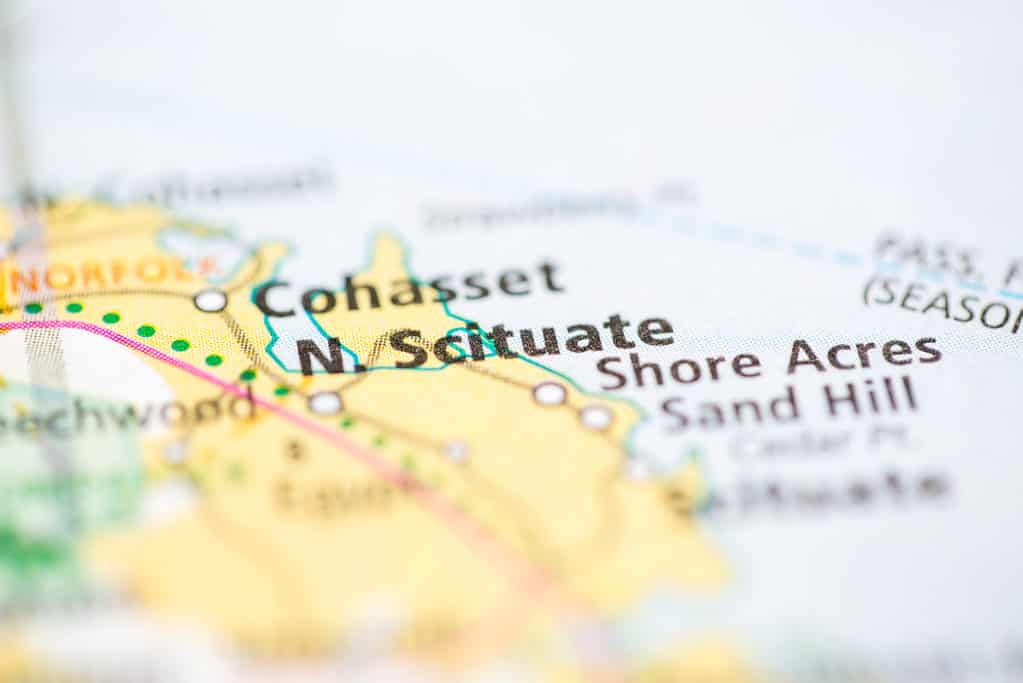
A great deal of New England lies on the Atlantic Coast.
©SevenMaps/Shutterstock.com
New England is a region made up of six different states: Maine, New Hampshire, Vermont, Massachusetts, Rhode Island, and Connecticut. Those six states represent the most northeastern region of the United States. New England was the first defined region within the area that would become the United States even before the American Revolution.
As a region, New England has some qualities that bind it together. While not every state is defined by them, these elements create a sense of commonality.
For one thing, New England is defined by its history. From the landing of the Mayflower to the Boston Tea Party, the states in New England have been the site of many historical events and early settlements in the U.S.
Also, many parts of New England were historically beholden to the sea for sustenance and jobs. Even today, Maine is renowned for its lobster, and the region has a style of clam chowder named after it. Millions of people flock to the area to enjoy the beaches and fishing these days too. The region’s ties to the sea are hard to overstate.
Historically, New England was a bastion of similar religious beliefs, architecture, and even literary styles. That doesn’t make New England a monolith, though. The area has always been steeped in the diversity of ideas and people, and that continues to this day.
Why Is the Region Called New England?
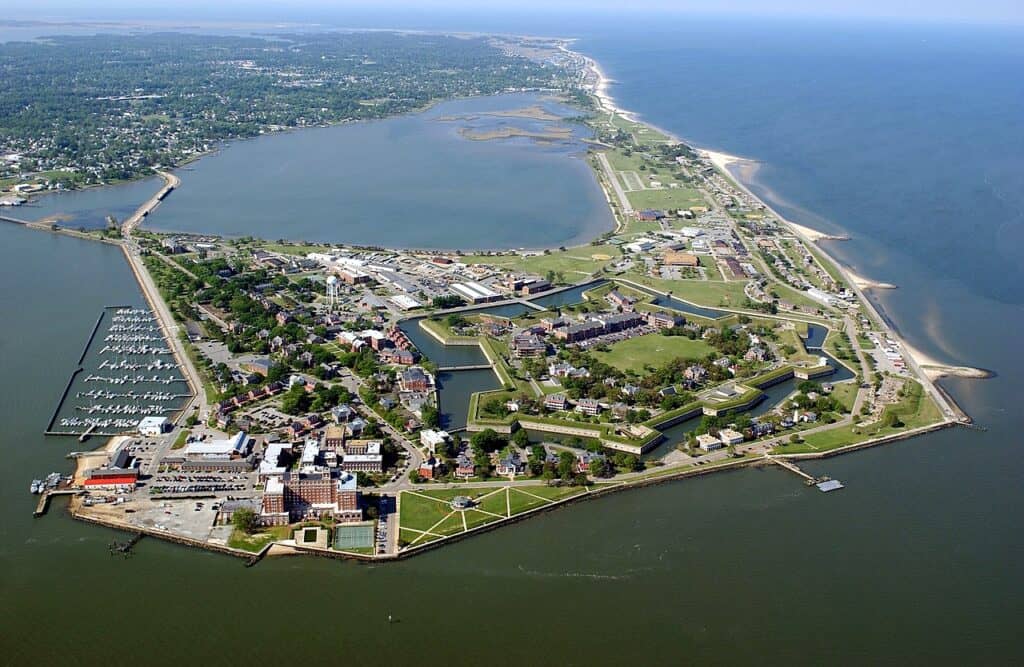
Fort Monroe is also known for Captain John Smith and his numerous exploits in the New World.
©United States Government / Public Domain – License
A common question concerning the states in New England is how the region got its name. Back in 1614, six years before the landing at Plymouth, Captain John Smith departed the first colony at Jamestown. He, along with a crew, sailed up to Mohegan Island off the coast of Maine. His journey was funded by London-based merchants that wanted to get ahold of some whale products.
While the other crew members traded and fished, Smith and others explored the coastal regions and took notes to make a map.
Two years later, Captain John Smith completed a book titled, A Description of New England. This map was developed in 1616, and it was reasonably accurate. He was the one who named the region New England. While it may not be the most creative name for the region, the moniker stuck.
About the Six States in New England
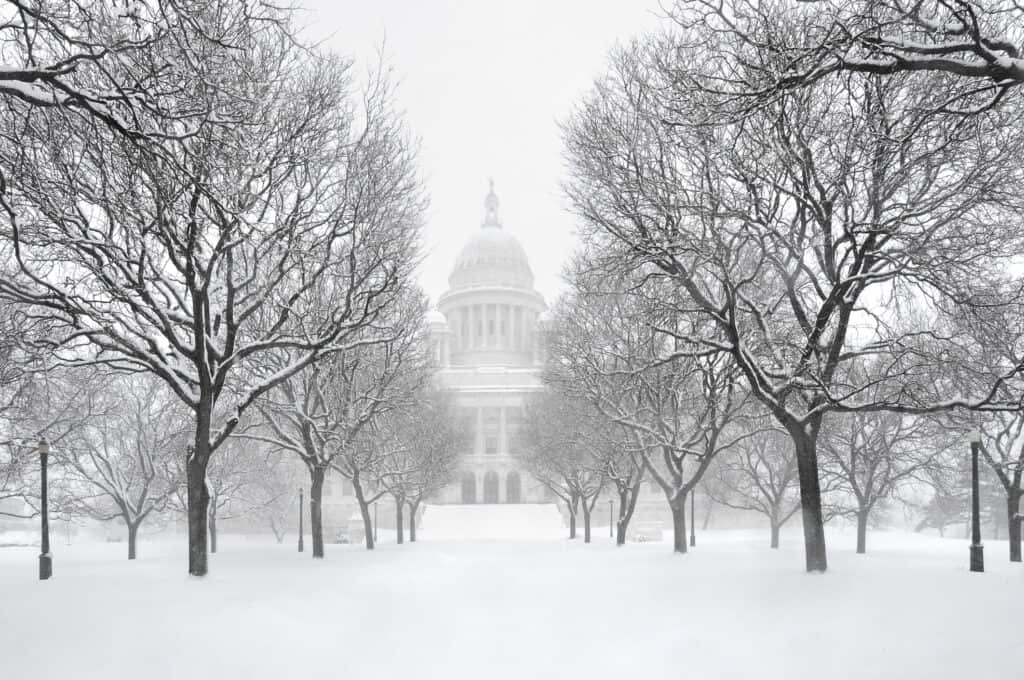
Parts of New England receive a lot of snow.
©iStock.com/nikon401
Each of the six states that make up New England is unique. They have unique cultures, values, businesses, and attractions. Take a look at each of these states and see how many people reside in them as well as what makes the state famous!
1. Maine
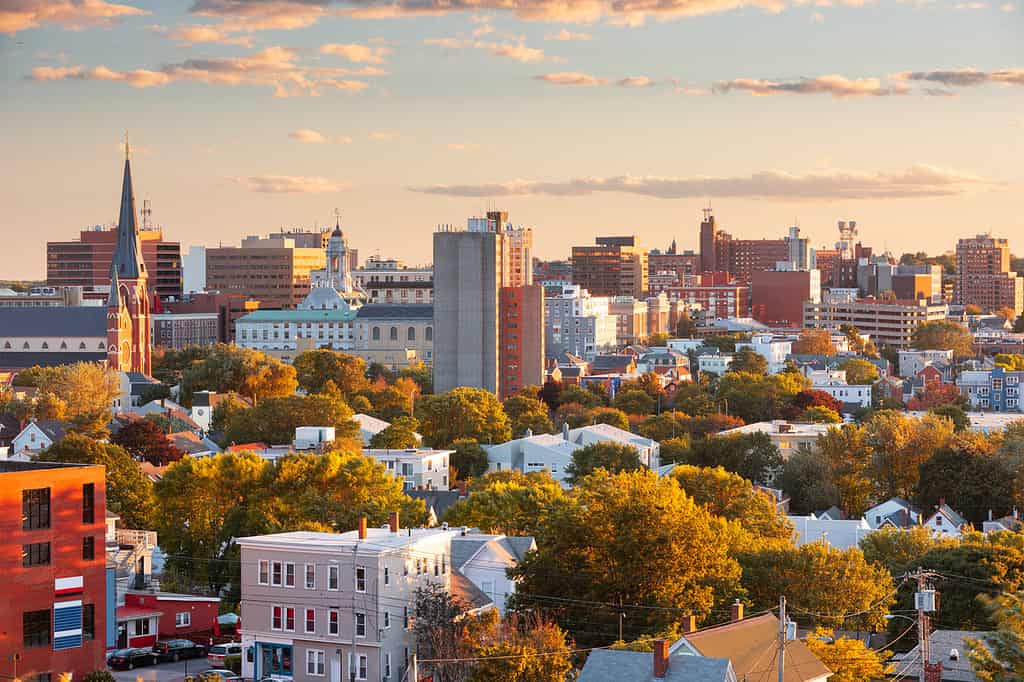
Maine is the largest state in New England.
©iStock.com/Sean Pavone
| Population | 1,362,359 |
| Founding Year | 1820 |
| Capital City | Augusta |
Maine is the largest state in New England, and it’s also the state situated farthest north on the East Coast. The state is known for its long and rocky coastline. Maine is famous for the lobsters caught off its coast as well as for its vast forested areas. The population of this state was 1,362,359 as of the 2020 census, larger than all but Connecticut and Massachusetts.
2. New Hampshire
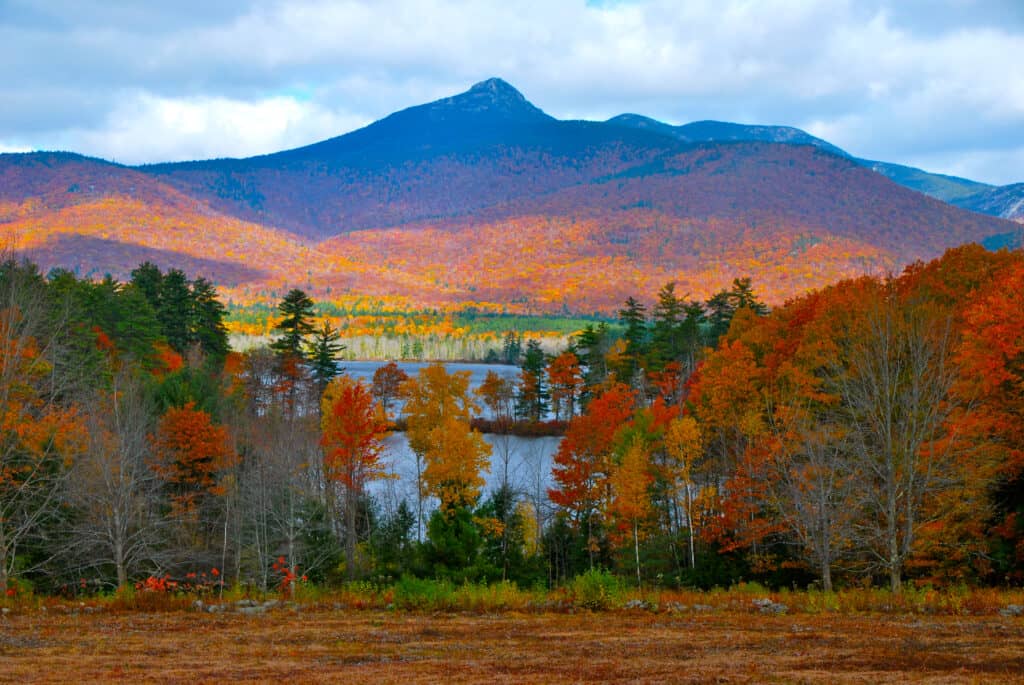
Mount Chocorua has been named by the Appalachian Trail Conservancy as one of the most photographed mountains in the world.
©Thomas J. McLaughlin/Shutterstock.com
| Population | 1,377,529 |
| Founding Year | 1776 |
| Capital City | Concord |
New Hampshire is a small state with a population of 1,377,529 people. The area is known for its historical connections to the American Revolution as well as its influence on modern politics with its early primaries. New Hampshire has beautiful forests, gorgeous granite formations, and mountain scenery. The state, like others in New England, has a great deal of natural beauty.
3. Vermont
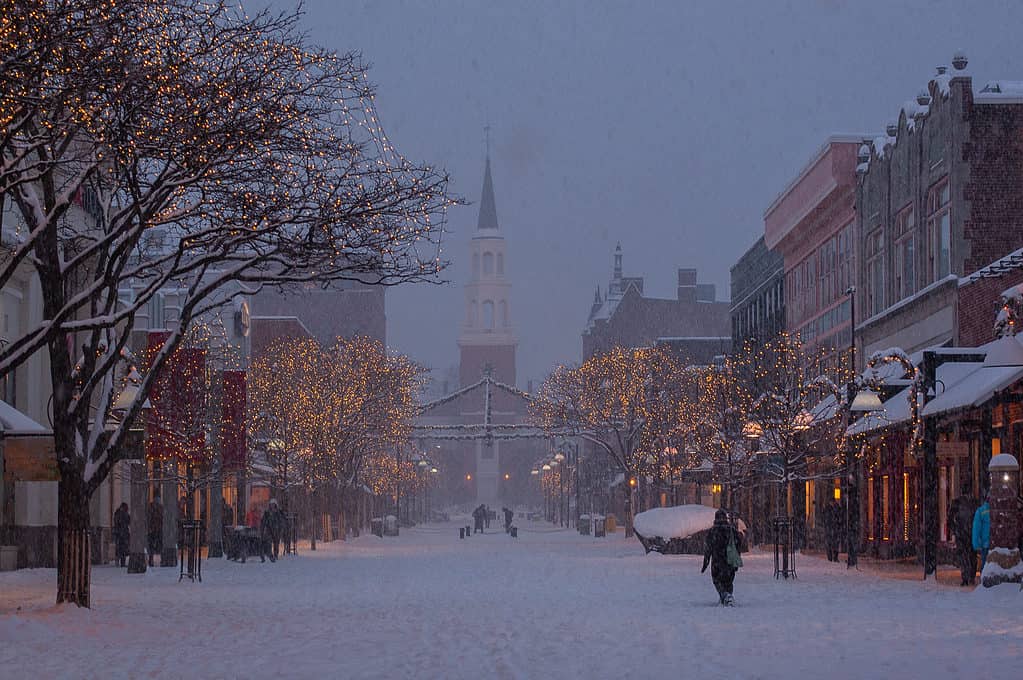
Burlington, Vermont is a stunning sight during heavy snowfall.
©iStock.com/Alex Boudreaux
| Population | 643,077 |
| Founding Year | 1791 |
| Capital City | Montpelier |
Vermont is another small state in New England, and it also has the lowest population of any state in New England. Vermont is famous for its small towns and scenic areas along with the sugar maple trees that allow for the production of maple syrup. Also, Vermont has some of the best skiing in New England.
4. Massachusetts

Boston blends the historical areas of New England with the modern era.
©Marcio Jose Bastos Silva/Shutterstock.com
| Population | 7,029,917 |
| Founding Year | 1788 |
| Capital City | Boston |
Massachusetts is the most populous state in New England. The state is well-known for the role it played in the American Revolution. Massachusetts was the site of the Boston Tea Party along with the Battles of Lexington and Concord. Today, Massachusetts is a bastion of higher learning with many universities and colleges within its borders. The state is also famous for attracting tourists who want to see historical areas as well as beautiful natural landscapes.
5. Rhode Island
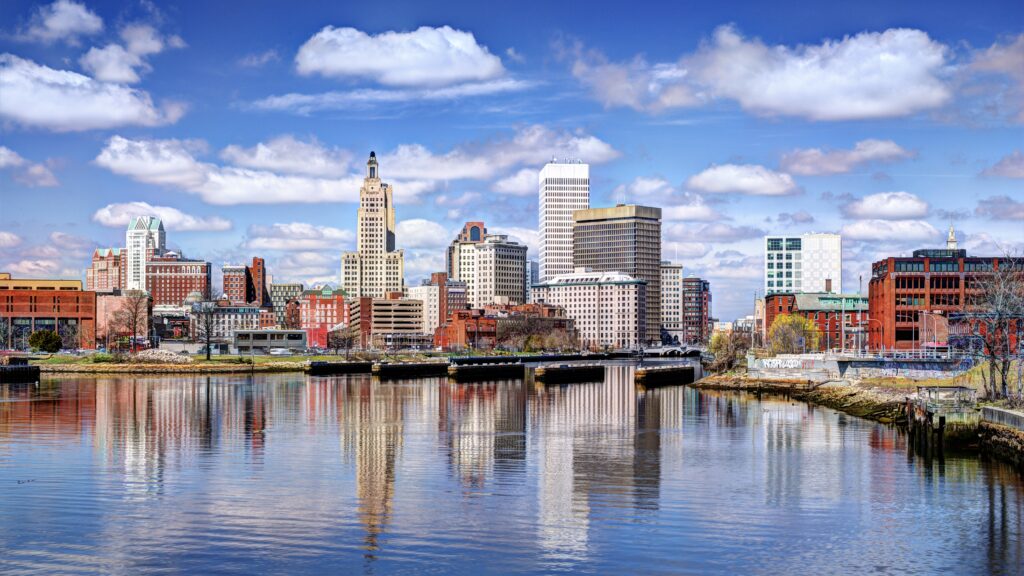
Rhode Island is the smallest state in the United States.
©Sean Pavone/Shutterstock.com
| Population | 1,098,163 |
| Founding Year | 1776 |
| Capital City | Providence |
Rhode Island is the smallest state in the United States, but it has a higher population than Vermont. The state is home to famous jewelers. Yet, tourism also makes up a big part of the state’s economy. Rhode Island is situated on the Atlantic Coast. Several large bays plunge deep into the state’s territory. With so much gorgeous coastline, it’s only natural that people would want to travel here, especially during the summer.
6. Connecticut
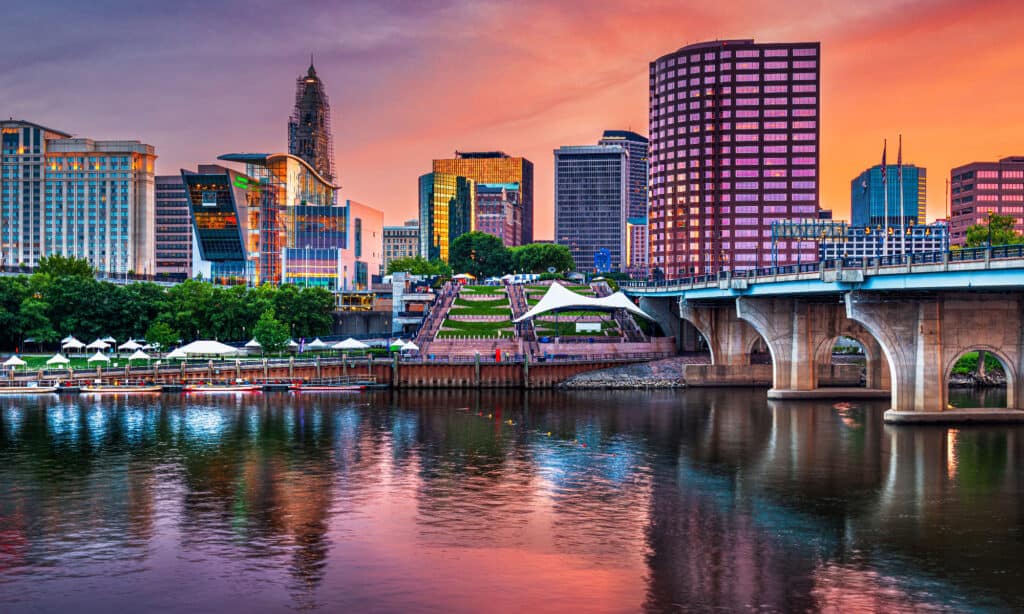
Hartford serves as Connecticut’s capital.
©Sean Pavone/Shutterstock.com
| Population | 3,605,944 |
| Founding Year | 1788 |
| Capital City | Hartford |
Connecticut is the southernmost of the states in New England. The state has large spans of gorgeous coastlines, rural farmland, and bustling cities. Essentially, Connecticut has a little bit of everything, and that makes it a very attractive place to live, work, and explore.
Knowing what states are in New England and their collective history provides a good overview of the region’s collectivity. While the states are not as similar to each other as they were in years past, some elements still bind them together. The gorgeous natural areas, agriculture, and proximity to the Atlantic Coast continue to make New England distinct a part of the United States.
The photo featured at the top of this post is © Rhona Wise/Shutterstock.com
Thank you for reading! Have some feedback for us? Contact the AZ Animals editorial team.






